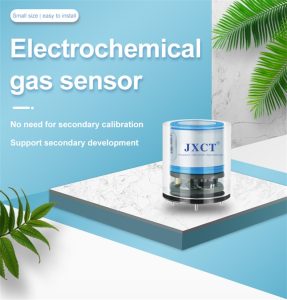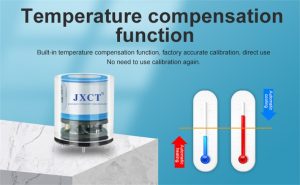Air pollution poses a significant threat to human health and the environment. With industries, transportation, and human activities releasing various pollutants into the atmosphere, monitoring air quality has become crucial. Traditional air quality monitoring methods often involve manual sampling and laboratory analysis, which can be time-consuming and limited in spatial coverage. However, advancements in gas sensor technology have revolutionized air quality monitoring, providing real-time data that enhances environmental protection efforts and enables prompt action to mitigate pollution. In this article, we explore the importance of monitoring air quality and how gas sensors play a vital role in safeguarding our environment.
Understanding Air Quality Monitoring:
Air quality monitoring involves measuring the concentration and composition of pollutants present in the atmosphere. It helps assess the level of pollution, identify pollutant sources, evaluate compliance with regulatory standards, and take appropriate measures to protect public health and the environment. Traditional monitoring methods relied on fixed monitoring stations and periodic manual sampling, which presented limitations in terms of coverage and timeliness.
The Power of Gas Sensors:
Gas sensors are instrumental in modern air quality monitoring systems. These sensors utilize different detection principles to measure the concentration of specific gases or air pollutants. They can detect a wide range of pollutants, including carbon monoxide (CO), nitrogen dioxide (NO2), ozone (O3), sulfur dioxide (SO2), volatile organic compounds (VOCs), and particulate matter (PM).
Real-Time Monitoring:
Gas sensors provide real-time measurements, enabling continuous monitoring of air quality. This real-time data allows for immediate identification of pollution episodes and their sources. It enables authorities to take prompt action to protect public health and reduce environmental impact. Real-time monitoring also helps detect sudden variations in pollutant levels, such as during industrial accidents or wildfires, allowing for rapid response and mitigation.
Increased Spatial Coverage:
Gas sensors are available in various formats, including portable handheld devices, fixed monitoring stations, and even wearable sensors. This versatility allows for increased spatial coverage, enabling monitoring in both urban and remote areas. Gas sensors can be deployed in cities, industrial areas, near highways, and even on drones, providing a comprehensive picture of air pollution across different regions.
Sensor Networks and Data Integration:
Gas sensors can be integrated into sensor networks, forming an interconnected system for comprehensive air quality monitoring. These sensor networks collect data from multiple sources and locations, allowing for the creation of detailed air pollution maps. By integrating data from various sensors, authorities can identify pollution hotspots, track pollution trends, and develop targeted mitigation strategies.
Citizen Science and Public Awareness:
The emergence of low-cost gas sensors has empowered citizen scientists to actively participate in air quality monitoring. Individuals and communities can monitor air quality in their surroundings using portable gas sensors and contribute to the collective understanding of local air pollution. This citizen engagement fosters public awareness, encourages responsible actions, and puts pressure on policymakers to address air quality issues effectively.
Early Warning Systems:
Gas sensors play a vital role in developing early warning systems for air pollution events. By continuously monitoring pollutant levels, these sensors can detect sudden spikes or exceedances of pollutant concentrations. Early warning systems provide alerts to authorities and the public, allowing for timely responses such as issuing health advisories, implementing pollution control measures, or altering transportation patterns.
Challenges and Future Directions:
While gas sensors have significantly improved air quality monitoring, certain challenges remain:
Sensor Accuracy and Calibration:
Ensuring the accuracy and reliability of gas sensor measurements is crucial. Regular calibration and maintenance are necessary to address sensor drift and maintain accuracy over time. Standardization of calibration protocols and traceability mechanisms can facilitate comparability and data reliability.
Sensor Selectivity:
Gas sensors should exhibit selectivity towards specific pollutants to avoid cross-reactivity and false readings. Advancements in sensor technology, such as selective coatings and advanced algorithms, are needed to enhance sensor selectivity and accuracy.
Sensor Lifespan and Durability:
The lifespan and durability of gas sensors impact their long-term efficiency and cost-effectiveness. Sensors should be able to withstand harsh environmental conditions, and their lifespan should be optimized to reduce replacement cost
 : +86 155 8830 2704
: +86 155 8830 2704 : jxdziot@gmail.com
: jxdziot@gmail.com
